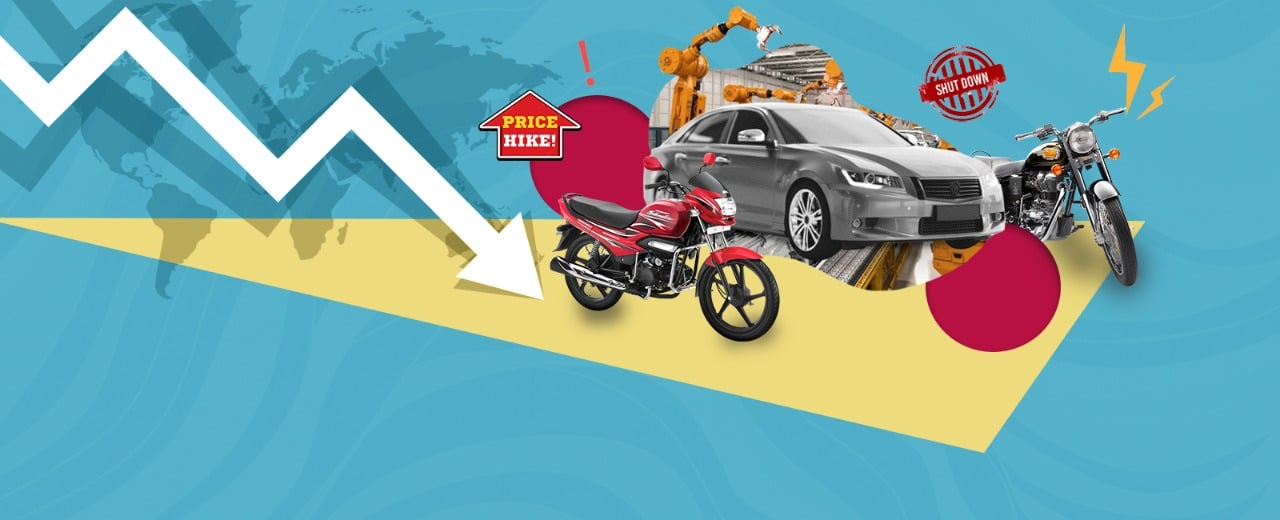2022: Auto sector in reverse gear as economy hits a bump in the road
Auto sector was roiled by rising interest rates, as well as inflation, born out of excessive monetary stimulus extended by Pakistan amid default threat

The auto sector saw wild shifts in 2022 as it mostly remained in the top gear during the roaring post-COVID recovery, but went into reverse owing to economic roadblocks in the second.
The mainboard sector at the start of the year 2022 was in a good shape, but it worsened down the line in the latter half.
Lower interest rates encouraged greater auto financing last year; however, the opposite situation added to the woes of the auto players in the outgoing year.
Headwinds like persistent inflation, rate hikes by State Bank of Pakistan (SBP), and cataclysmic floods laid waste to the economy this year and the auto sector was no exception as it struggled hard to procure supplies amid skyrocketing costs and unpredictable shortages.
The Monetary Policy Committee (MPC) of the central bank, in its last meeting held in November, raised the key policy rate by 100 basis points to 16% — the highest since 1999.
It should be noted that the central bank increased the rate by a cumulative 900 basis points in 15 months (September 2021 to November 2022) to 16%.
The record high-interest rate adversely impacted the performance of the sector which performed "remarkably" well last year and was expected to cross the 300,000 units’ target.
However, the sector was roiled by rising interest rates, as well as inflation, born out of the excessive monetary stimulus extended by Pakistan in the wake of the looming threat of default. Such episodes of rate hikes in developing economies always have the effect of sucking liquidity out of markets into safer treasury assets instead.
The results were brutal. Recession, dollar flight, and pressures on the exchange rate weighed down heavily on sectors like the automobiles.
Terming it the “most awful year for the auto assemblers”, analyst Arsalan Hanif recalled that during the first half of the calendar year 2022 (January-June), the automobile sector posted outstanding dispatches, but in the latter half, problems began to resurface when rupee drastically depreciated against the US dollar and the SBP restricted the opening of letter of credits (LCs).
“Consequently, automobile players could not import key raw materials —without which companies could not assemble auto vehicles as they did not have a domestic alternate available for these raw materials),” he mentioned.
In May, the coalition government — just one month after coming into power — through an SRO598 of 2022 slapped a ban on the import of nearly 800 items in 33 categories in a bid to contain the rising import bill to minimise pressure on the country’s dwindling foreign exchange reserves.
However, the government after realising the folly and the haste with which the step had been announced, the ban on most items subsequently lifted except three items; completely built-up (CBU) vehicles, cellphones and electronics.
The local auto industry is highly dependent on imports and has been facing severe difficulties since then, as the central bank also imposed restrictions on the opening of LCs following a severe liquidity crunch.
In June, monthly auto sales reached an all-time high of 28,500 units. Meanwhile yearly auto sales reached an all-time high of 279,700 units during the last fiscal year 2021-22. However, since July the sales started registering a decline as all the aforementioned reasons dented the demand and supply mechanism of the sector.
Following the obstacles, Hanif said that the original equipment manufacturer (OEMs) posted operating losses which were attributable to:
1. Lower utilisation of plant due to a shutdown amid unavailability of key raw materials
2. Markup payments to customers in advance against bookings owing to late deliveries
3. Demurrage and detention charges
4. Exchange losses as 40-50% of the raw materials are imported
“Decade-high inflation and interest rates also impacted the demand for automobiles,” Hanif said, adding that this coincided with multiple hikes in vehicle prices by OEMs.
The analyst further recalled that prices were also partially decreased during the year in lieu of exchange rate volatility. “However, given unforeseeable expenses in terms of demurrage and late payment surcharge incurred during the year, the companies posted operating losses,” he explained.
Following such incidents, automobile manufacturers started shutting down their production plants. Pakistan’s leading car assembler, Indus Motor Company (IMC), shut down its plant thrice during the outgoing calendar year — due to “hurdles in import and clearance of consignments”.
Pak Suzuki Motor Company and Baluchistan Wheels Limited also closed their production in brief intervals during the year. Meanwhile, Millat Tractors has announced the closure of its production on Fridays, citing a decline in demand for tractors in the country after cataclysmic floods.
However, on the other hand, MG Motors Pakistan received a manufacturing certificate from the government, paving way for its local assembly.
The company started booking orders for its 1.5L Turbo Engine MG HS Essence at a price tag of Rs6.9 million.
Wrapping it up, Hanif said, given the ground realities, the automobile sector is unlikely to start firing on all pistons even in the next year; however, unhampered import of raw materials and a policy rate cut might crank up the industry in the days to come.
Thumbnail and banner illustration. — Geo.tv/AyeshaNabi




